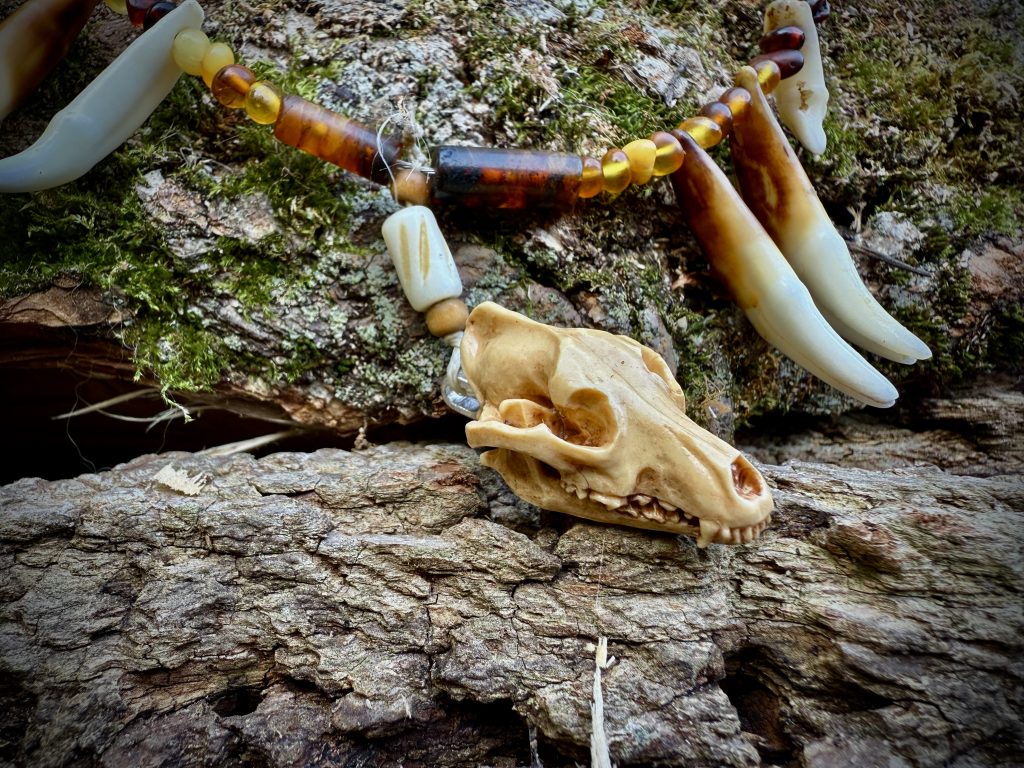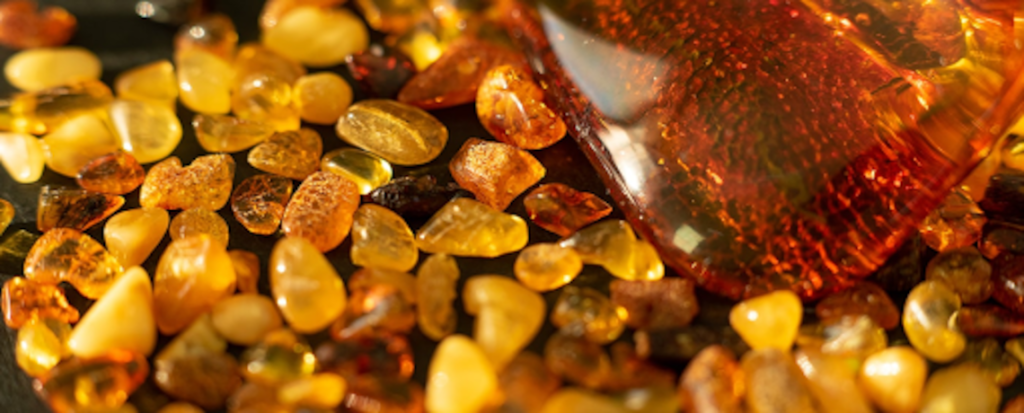Sacred and Religious Significance
In Slavic spirituality, amber embodied the essence of fire and sunlight. It was linked to Svarog, the celestial smith who kindled the sun’s fire, and to Dazhbog, the radiant sun-giver. Amber was also bound to the goddess of fertility and love, often equated with Lada, whose warmth and beauty mirrored the stone’s glow.
Priests and healers wore amber beads during ceremonies, believing them to protect against evil spirits and illness. Amber smoke, when burned, was said to purify the air, drive away curses, and connect the living to the realm of the ancestors. Mothers tied amber amulets around their children’s necks to ward off disease, and warriors carried pieces of it into battle as charms of protection and courage.
Amber also accompanied the dead. Archaeologists have unearthed countless burial sites where amber beads, pendants, and figurines were laid beside the departed. To the Slavs, amber served as a bridge between worlds—its golden light guiding souls safely into the afterlife.
Amber and Trade: The Amber Road
Beyond its sacred role, amber shaped the destiny of Slavic lands as a sought-after commodity. The so-called Amber Road stretched from the Baltic coast through Central Europe to the Mediterranean. Long before the Roman Empire, merchants carried amber into lands far beyond the Slavic homeland.
Roman chroniclers marveled at the beauty of Baltic amber, which they used in jewelry, medicine, and even in arena spectacles—dusting the ground with powdered amber for fragrance. Through this trade, the Slavs’ homeland became a crossroads of cultures, with amber acting as both currency and cultural ambassador.
A Rodnover Reflection: Amber as Ancestral Memory
To those who walk the Rodnover path today, amber is more than a relic of history. It is a vessel of memory. Within each stone lies a fragment of the ancient forests that once covered our lands. To hold amber is to touch the time before time, when our ancestors first kindled fires beneath the stars and offered prayers to the spirits of oak, birch, and river.
Amber reminds us of the sacred balance: resin that once flowed from wounded trees hardened into eternal stone, teaching that from suffering can emerge beauty and strength. It is a material that unites earth, fire, and water—born in the forest, shaped by time, and delivered by the sea.
The Healing Power of Amber
Among the ancient Slavs of Poland, amber was revered not only as a sacred stone of the gods but also as a vessel of healing. It was believed that amber carried the warmth of the sun within it, able to draw out illness and restore balance to the body. Powdered amber was mixed into tinctures for stomach ailments, while beads worn against the skin were thought to calm the heart and protect against fevers. Mothers often placed small pieces of amber near their children to safeguard them from evil spirits and the wasting sickness. In these practices, amber was more than medicine—it was a living embodiment of health, harmony, and divine blessing, gifted by the Earth and sea to the Slavic people.
Modern Uses and Continuity
Even today, amber holds a cherished role in Polish and Slavic culture. In Gdańsk, Poland’s historic center of amber craftsmanship, artisans shape the stone into rosaries, pendants, and intricate carvings that carry both beauty and blessing. Many Poles wear amber jewelry not merely for adornment, but as a link to ancestry and homeland.
Amber is also renowned in folk medicine. Ground into powders, infused into oils, or worn against the skin, it is still believed to ease pain, calm the spirit, and strengthen vitality. The famous “Baltic amber teething necklaces” for children continue an ancient tradition of using amber to protect and heal the young.
Culturally, amber remains a symbol of identity. Polish families pass amber heirlooms from one generation to the next, binding children to the same heritage their grandparents cherished. In this way, amber is not just an ornament but a continuity of blood, soil, and spirit.
Amber as Homeland
For Poles, amber is more than a gemstone—it is Poland itself. Just as the sea casts amber onto the Baltic shore, the homeland casts its memory into the heart of its children, no matter how far they travel. A single bead of amber worn on the chest can remind the Polish emigrant in Chicago, Toronto, or London of the windswept beaches of the Baltic and the prayers of their ancestors.
Amber embodies what it means to belong to the land: a piece of nature made eternal, inseparable from the soil and sea of Poland. It whispers that our roots lie deep, that our culture is as enduring as the fossilized resin, and that, though empires rise and fall, the Slavic spirit remains.
Conclusion
Amber is more than a beautiful stone. To the Slavs, it was the soul of the sun and a sacred bond to gods, ancestors, and homeland. From storm-tossed beaches to burial mounds, from the Amber Road of antiquity to the artisan workshops of modern Gdańsk, amber has carried our people’s memory across centuries.
To touch amber today is to hold the same light our ancestors held in their hands. It is to feel the warmth of the homeland, the continuity of tradition, and the unbroken thread that ties us to the land and spirit of the Slavs.
Sources
Gimbutas, Marija. The Slavs. Thames and Hudson, 1971.
Bliujienė, Audronė. Northern Gold: Amber in Lithuania. Klaipėda University Press, 2011.
Kwiatkowska-Kołaczyk, Izabela. “Amber in Polish Culture and History.” Polish Journal of Anthropology, 2019.
Filipowiak, Władysław. The Amber Route in Antiquity. National Museum in Szczecin, 1991.
Znamenski, Andrei. The Beauty of the Primitive: Shamanism and the Western Imagination. Oxford University Press, 2007.




